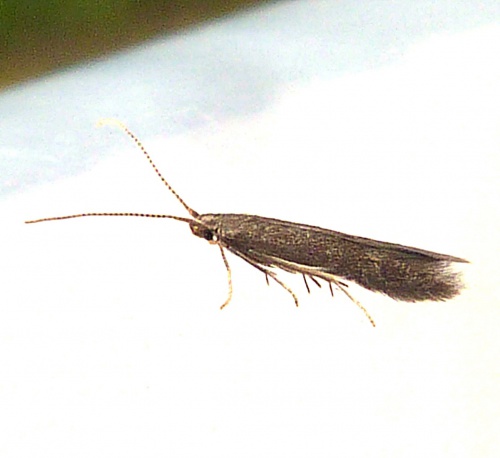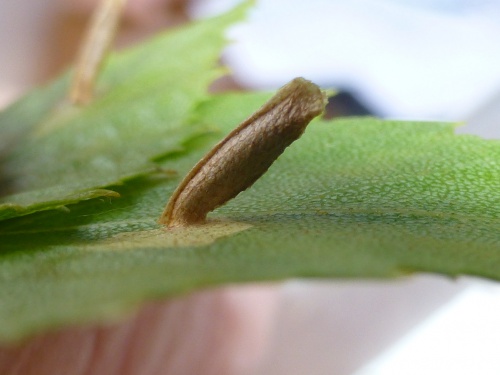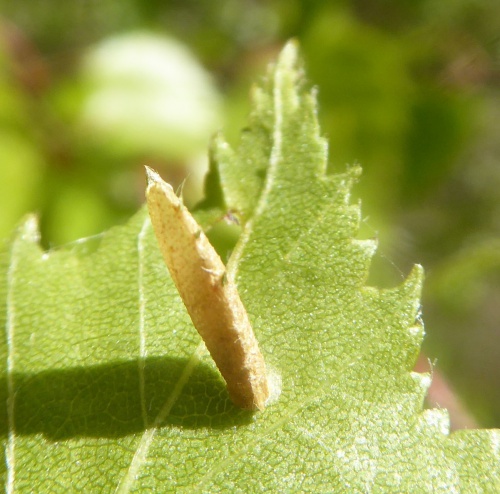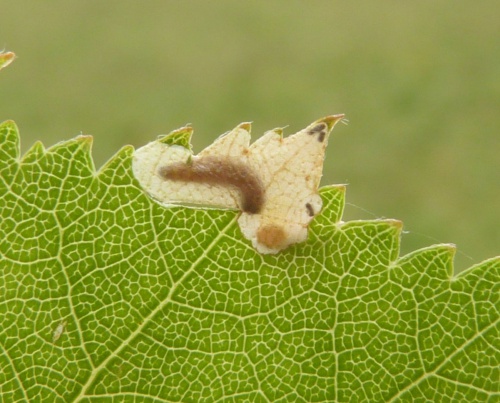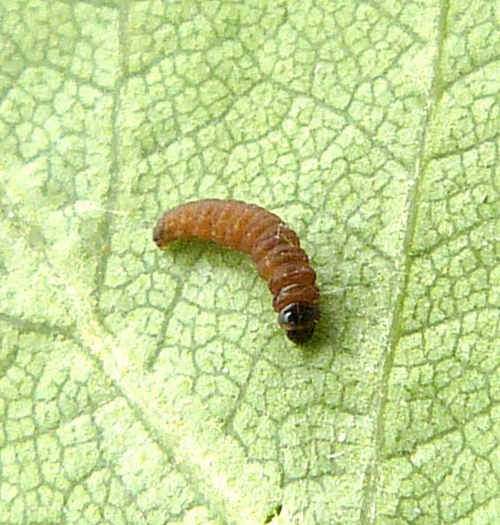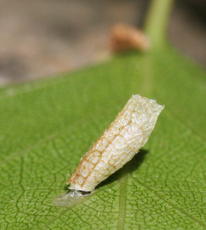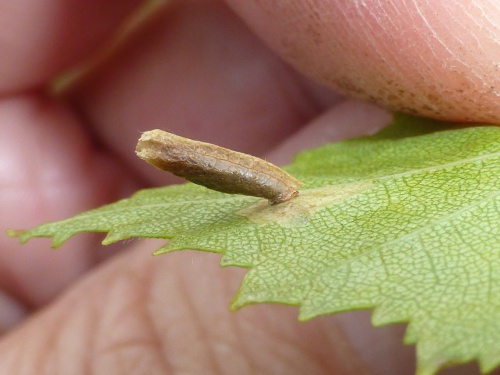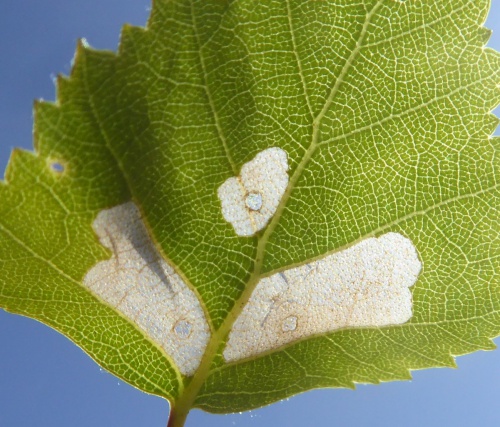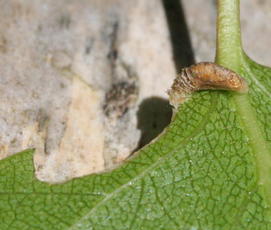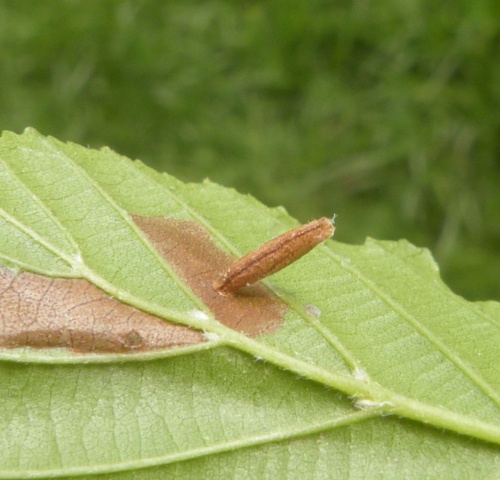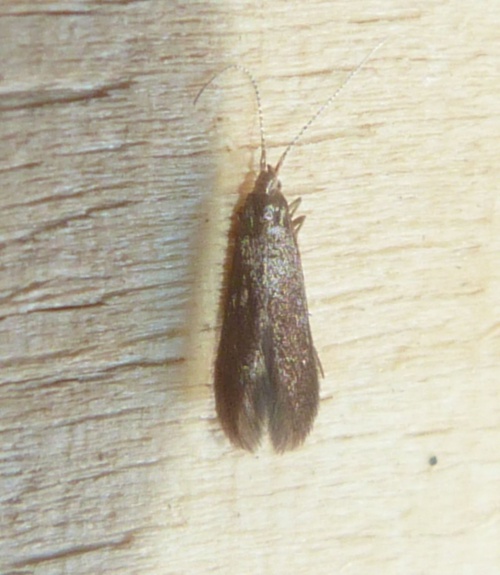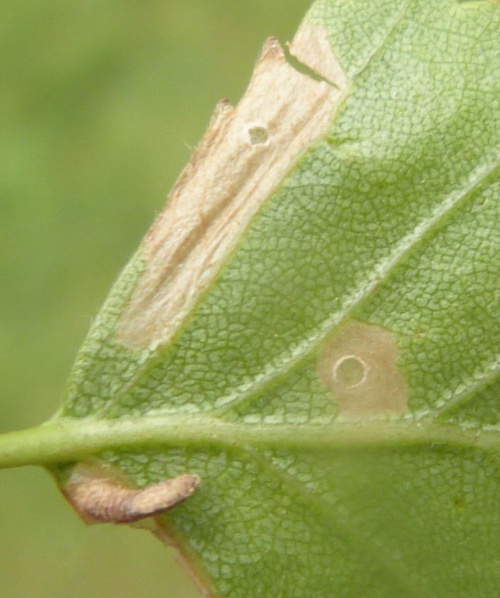Coleophora serratella
Wingspan 11-14 mm. This is probably the commonest species of British Coleophorids and is found throughout the British Isles wherever its food plants grow. The adult, which appears in June, resembles several other grey-brown Coleophora species. The indistinct rings near the tip of the antenna distinguish it from some of them, but examination of the genitalia is advised for positive identification of non-reared specimens.
Often on Elm but also other deciduous trees.
The elusive adults emerge in June and July.
The larva feeds by inserting its head into small mines it creates on the leaves of Birch, Elm, Alder or Hazel. Occasionally it is found feeding on other trees, or on herbaceous plants onto which it has accidentally fallen. Pupation is from June to early July and is in a larval case fixed to a leafsurface in a sunny situation. Sometimes pupation is on plants other than those fed on.
The species is widely distributed, though probably under recorded in Britain. In the Butterfly Conservation’s Microlepidoptera Report 2011 this species was classified as common.
Lack of records suggest that this species is uncommon in Leicestershire and Rutland, but this is possibly due to the difficulty of identification. L&R Moth Group status = D (rare or rarely recorded)
Leicestershire & Rutland Map
Enter a town or village to see local records
MAP KEY:
Yellow squares = NBN records (all known data)
Coloured circles = NatureSpot records: 2020+ | 2015-2019 | pre-2015
UK Map
Species profile
- Common names
- Common Case-bearer
- Species group:
- Moths
- Kingdom:
- Animalia
- Order:
- Lepidoptera
- Family:
- Coleophoridae
- Records on NatureSpot:
- 26
- First record:
- 27/06/2010 (Calow, Graham)
- Last record:
- 27/07/2023 (Poole, Adam)
Total records by month
% of records within its species group
10km squares with records
The latest images and records displayed below include those awaiting verification checks so we cannot guarantee that every identification is correct. Once accepted, the record displays a green tick.
In the Latest Records section, click on the header to sort A-Z, and again to sort Z-A. Use the header boxes to filter the list.


